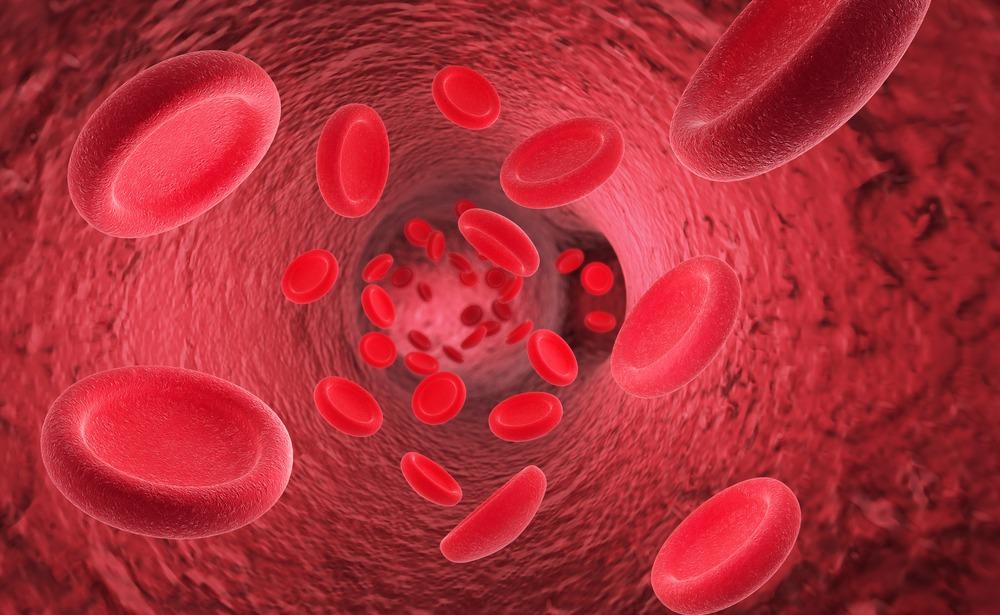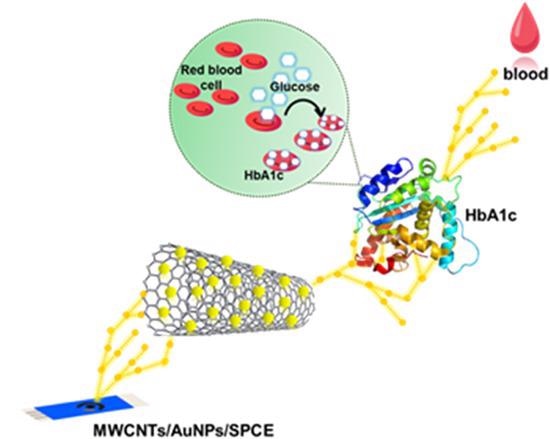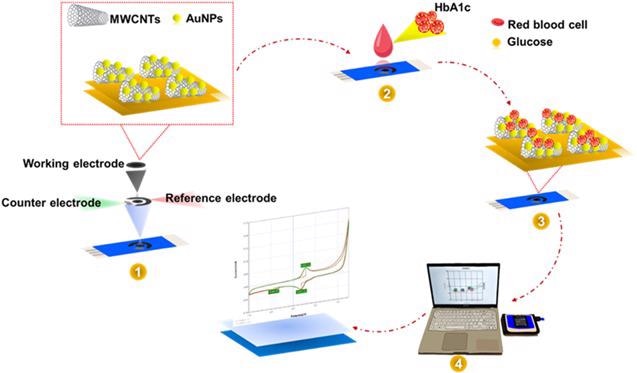Novel research published in the Journal of The Electrochemical Society, has reported the development of an electrochemical sensor that is based on multiwalled carbon nanotubes/gold nanoparticles (MWCNTs/AuNPs). This advanced research was for the application of hemoglobin detection within blood samples.

Study: A Novel Electrochemical-Biosensor Microchip Based on MWCNTs/AuNPs for Detection of Glycated Hemoglobin (HbA1c) in Diabetes Patients. Image Credit: NosorogUA/Shutterstock.com
Why is Hemoglobin Detection Important?
Hemoglobin molecules can be found in the blood as a protein within red blood cells or erythrocytes, which carry oxygen molecules. To ensure that there is enough oxygen being carried to each cell in the body, hemoglobin levels must be maintained.
When this protein is dysregulated, it results in insufficient oxygenation, which can lead to significant health risks, including anemia. Additionally, ineffective homeostasis and regulation can cause elevated hemoglobin levels, which can be found in a disorder known as erythrocytosis, due to the overproduction of red blood cells.
Hemoglobin levels typically found in men are within a range of 14 to 18 grams per deciliter (g/dl), and this is slightly lower for women, which is found to be between 12 to 16 g/dl. The measuring of these levels allows physicians to ensure the healthy working of a patient’s body.
Hemoglobin A1c measurements allow the average blood sugar levels within a patient within the last two to three months to be ascertained. This is enabled as sugar molecules bind to hemoglobin and thus can provide an indication of sugar or glucose levels within the blood for insight into potential diabetic diagnoses. Hemoglobin A1c (HbA1c) can be used as a test for diabetes as well as monitoring the management of this health hazard.
There are approximately 34.2 million people who have been estimated to have diabetes worldwide. These statistics have been predicted to increase and while hemoglobin levels can be used for a diagnosis, the equipment for these devices as well as the procedure can be expensive and inefficient for health care systems. This realization has led to research into a rapid and cost-effective method to detect hemoglobin A1c.

A schematic representation of the sensor fabrication and principle behind HbA1c detection. © Ponsanti, K., et al (2022)
Developing an Alternative Diagnostic Method
The use of nanomaterials that are within the nanoscale of 1 and 100 nm, have advanced the field of nanotechnology for use within various applications in biomedical research. This research has utilized multiwalled carbon nanotubes and gold nanoparticles for the development of an electrochemical biosensor microchip.
Metallic nanoparticles including gold nanoparticles (AuNPs) have gained popularity in research over the years due to their potential in diagnostics and therapeutics. These particles have properties including enhancing conductivity as well as having affinity to tumor sites for targeted drug delivery.
Additionally, carbon nanotubes, which are effective electrode materials, have also been included in this innovative device due to beneficial properties such as chemical stability, high electrical conductivity, and surface functionalization to ensure further versatility of these materials.
Multiwalled carbon nanotubes have been used in applications such as batteries as well as nanoelectronic devices and would be a welcomed addition for advancing the development of an electrochemical biosensor for detecting hemoglobin A1c.

Schematic depicting HbA1c and total Hb detection in blood using MWCNTs/AuNPs/SPCE electrodes. © Ponsanti, K., et al (2022)
The combination of these two nanomaterials only further enhances their properties with a synergistic effect, producing a high-performing product. This research prepared gold nanoparticles with a low-cost and simple approach using passion fruit peel extract, which was then deposited onto the surface of multiwalled carbon nanotubes for the development of electrodes for biosensing.
The combination of these nanomaterials was used for coating a screen-printed carbon electrode (SPCE) resulting in a highly sensitive detection method for hemoglobin A1c in diabetic patients. The significance of this lies in comparison to other methods that utilize electrochemical techniques, which involve time-consuming and more complex steps than this novel approach.
Future Outlook
The use of this nanotechnology electrochemical biosensor for detecting hemoglobin A1c enables the diagnosis of diabetes with a simple, cost-effective, and rapid response approach. This can be useful within a clinical setting that can be burdened with the large volume of potential diabetic patients that require testing.
Additionally, with a shorter and cheaper alternative to conventional approaches, this method can allow patients to be given a diagnosis faster, which can then guide patient treatment at an earlier stage. This can be potentially life-changing for patients that are able to quickly manage their disorder as opposed to suffering without a diagnosis.

The sensing protocol for electrochemical detection of HbA1c and total Hb in blood samples. The MWCNTs/AuNPs/SPCE electrode components are shown in the orange circle, with the MWCNTs shown as tubes and the AuNPs denoted as yellow spheres. © Ponsanti, K., et al (2022)
The burden on healthcare systems and laboratories can also be eased with this novel approach as this innovative method can lessen the arduous steps required for a diagnosis, which also allows more staff members to be trained.
The benefit of increasing patient care by reducing the diagnosis time is a priority for precision medicine, a field of medicine that is more targeted and patient-centered, and this approach serves this purpose of patient care. With the enhanced quality of diagnoses, the morbidity and mortality rates associated with diabetes and dysregulated hemoglobin levels can be decreased.
Reference
Ponsanti, K., Ngernyuang, N., Tangnorawich, B., Na-Bangchang, K., Boonprasert, K., Tasanarong, A., Saeheng, T., Hanwattanakul, A. and Pechyen, C., (2022) A Novel Electrochemical-Biosensor Microchip Based on MWCNTs/AuNPs for Detection of Glycated Hemoglobin (HbA1c) in Diabetes Patients. Journal of The Electrochemical Society, 169(3), p.037520. Available at: https://iopscience.iop.org/article/10.1149/1945-7111/ac5c0a
Further Reading
Billett HH. Hemoglobin and Hematocrit. In: Walker HK, Hall WD, Hurst JW, editors. Clinical Methods: The History, Physical, and Laboratory Examinations. 3rd edition. Boston: Butterworths; (1990) Chapter 151. Available from: https://www.ncbi.nlm.nih.gov/books/NBK259/
Statistics, D. and Health, N., (2022) Diabetes Statistics | NIDDK. [online] National Institute of Diabetes and Digestive and Kidney Diseases. Available at: https://www.niddk.nih.gov/health-information/health-statistics/diabetes-statistics
UK, D., (2022) Diabetes statistics. [online] Diabetes UK. Available at: https://www.diabetes.org.uk/professionals/position-statements-reports/statistics
Disclaimer: The views expressed here are those of the author expressed in their private capacity and do not necessarily represent the views of AZoM.com Limited T/A AZoNetwork the owner and operator of this website. This disclaimer forms part of the Terms and conditions of use of this website.